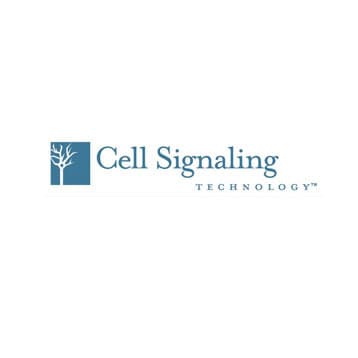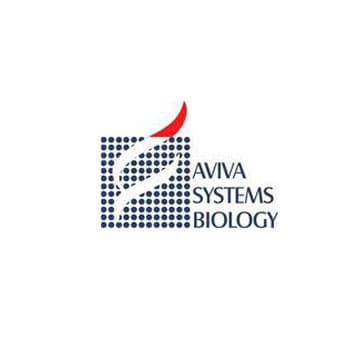Antibodies
Looking to buy reliable and cost effective Antibodies for your research?
Antibodies are protein molecules used by an organism’s immune system to bind to and deactivate a foreign molecule, or antigen, such as a virus or a drug. The 3-dimensional shape of the antibody must fit the epitope on the surface of an antigen, in order to bind with that antigen to prevent it from harming the organism, or to tag it for destruction.
Since their discovery in 1890, antibodies have become the workhorses of the lab in genetic, protein, biochemical and other research, as well as for drug development, therapeutics and diagnosing infectious diseases. In the lab, antibodies are used to detect specific proteins. For example, new methods are being developed that use antibodies to detect cancer cells in a patient’s bloodstream.
Humans alone create billions of different antibodies, while other organisms such as mice, goats, chickens, plants, viruses and insects generate billions more. Thousands of these antibodies are available to researchers in purified commercial preparations.
For research or clinical testing, antibodies are prepared by injecting an antigen into a living host, such as a mouse, which reacts by creating large amounts of antibodies that must then be extracted for use. The host species used is just one of several considerations for choosing a particular antibody for a given assay. Another consideration is the target gene or protein to be studied, including the specific part and isoform of the protein.
Antibodies come in primary and secondary types. Primary antibodies react to the presence of an antigen. Secondary antibodies, labeled “anti-human” or “anti-mouse,” etc., bind to the primary antibodies. The secondary antibody can be designed so that an identifying marker allows a clinician or researcher to detect the presence of and/or measure the amount of the antibody.
Browse the product range below or simply use the Search Tool above to help find the best Antibodies at the most competitive prices.
Once you have selected a product, complete a ‘Get a Quote’ form to find the best price!
Showing 24 of 87013 results
Product A-Z
Applications
IP
Hosts
Mouse
Reactivities
Hum, Mouse, Rabbit
Applications
IP
Hosts
Rabbit
Reactivities
Hum, Mouse, Rabbit
Applications
IP
Hosts
Rabbit
Reactivities
Hum, Mouse, Rabbit
Applications
IP
Hosts
Rabbit
Reactivities
Hum, Mouse, Rabbit
Applications
IP
Hosts
Rabbit
Reactivities
Hum, Mouse, Bov, Can, Prc, Rabbit, Xen/Amph
Applications
IP
Hosts
Rabbit
Reactivities
Hum, Mouse, Bov, Can, Prc, Rabbit, Xen/Amph
Applications
FC, ICC, IF, IP
Hosts
Mouse
Reactivities
Hum, Mouse, Rat, Bov, Can, Ch/Bird, Dnk, Fel, Goat, GP, Ham, Horse, Prc, Rabbit, Sheep
Applications
IHC
Reactivities
Hum
Applications
IP
Hosts
Rabbit
Reactivities
Hum, Mouse, Rabbit
Applications
FC, ICC, IF
Hosts
Rabbit
Reactivities
Hum, Mouse, Bov, Rabbit, ZF/Fish
Applications
FC, ICC, IF
Hosts
Rabbit
Reactivities
Hum, Mouse, Bov, Rabbit, ZF/Fish
Applications
FC, ICC, IF
Hosts
Rabbit
Reactivities
Hum, Mouse, Bov, Rabbit, ZF/Fish
Applications
ICC, IF
Hosts
Rabbit
Reactivities
Hum, Mouse, Bov, ZF/Fish
Applications
ICC, IF
Hosts
Rabbit
Reactivities
Hum, Mouse, Bov, Rabbit, ZF/Fish
Applications
FC, ICC, IF
Hosts
Rabbit
Reactivities
Hum, Mouse, Bov, Rabbit, ZF/Fish
Hosts
Rabbit
Reactivities
Hum, Mouse, Rabbit, ZF/Fish
Hosts
Rabbit
Reactivities
Hum, Mouse, Bov, Rabbit, ZF/Fish
Applications
FC
Hosts
Rabbit
Reactivities
Hum, Mouse, Bov, Rabbit, ZF/Fish
Applications
FC, ICC, IF
Hosts
Rabbit
Reactivities
Hum, Mouse, Bov, Rabbit, ZF/Fish
Applications
IHC, WB
Reactivities
Hum, Rat
Hosts
Rabbit
Reactivities
Hum
Hosts
Rat
Reactivities
Hum, Mouse
Hosts
Rabbit
Reactivities
Hum
Applications
IP
Hosts
Rabbit
Reactivities
Hum, Mouse
Latest promotions
Buy any polyclonal or monoclonal antibody from our extensive range of pre-made antibodies and for a limited time only receive a $50 discount!(T&C apply:...
New brilliant antibodies, and new lower prices!For flow cytometry reagents in general, \"bright is better.\" The violet-excitable BD Horizon™ BV421 and...
Did your supplier increase the price of Fetal Bovine Serum? Did they substitute the US Origin with USDA? Well say no more! Innovative Research is still...
10% Discount on 2 Rabbit Polyclonal Antibody Service. With over 20 years experience, SDIX has developed into the premier US custom antibody producer,...
For the past decade scientists have extensively used ATS secondary toxin conjugates to make their own targeted toxins for in vitro use.The ability to combine...
We're so sure that you'll prefer Cayman Assay kits over your present brand that we're willing to give you a free assay kit to prove it!
Bulk Cytokines with Custom Vialing.20 - 50% off cytokines, growth factors, chemokines and more...For a limited time Cell Sciences is offering substantial...
Are you planning to have a customised antibody made for your research?Since 2000, Everest has been producing a catalog containing thousands of affinity...
Top suppliers
Agrisera AB
11 products
Biotrend
Biosensis
969 products
ABBIOTEC
3011 products
SDIX
1 products
Spring Bioscience
2291 products
Cell Signaling Technology
4976 products
Rockland Immunochemicals, Inc.
7592 products
Boster Immunoleader
1533 products
OriGene Technologies Inc.
5281 products
Maine Biotechnology Services
227 products
BD (Becton, Dickinson and Company)
1 products
ABNOVA CORPORATION
Randox Life Sciences
1502 products










